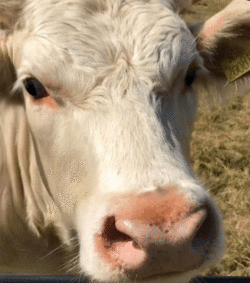Medicine:Ear wiggling
Ear wiggling is movement of the external ear using the three muscles which are attached to it forward, above and behind. Some mammals such as cows have good control of these muscles, which they use to twitch and orient their ears, but humans usually find this difficult.
Research conducted on humans using a kymograph to measure their ear movements found that only two out of twelve subjects had any voluntary control at the start, but that the others could acquire this by training with an early form of biofeedback.[1][2][3]
Female rats wiggle their ears when they are in heat, to excite male rats and encourage them to mate.[4]
Ear wiggling was a shtick in Hal Roach comedies such as Laurel and Hardy and Our Gang. To achieve this effect, performers such as Stan Laurel would have their ears pulled by threads which would not be visible in the film.[5]
See also
References
- ↑ Bair, J. H. (1901), "Development of voluntary control", Psychological Review 8 (5): 474–510, doi:10.1037/h0074157, https://zenodo.org/record/1429153
- ↑ Wegner, Daniel M. (2017), The Illusion of Conscious Will, MIT Press, pp. 29–31, ISBN 9780262534925
- ↑ Yates, Aubrey J. (2012), Biofeedback and the Modification of Behavior, Springer Science & Business Media, pp. 6–8, ISBN 9781468435542
- ↑ McIntosh; Barfield; Geyer (1978), "Ultrasonic vocalisations facilitate sexual behaviour of female rats", Nature 272 (5649): 163–164, doi:10.1038/272163a0, PMID 628443, Bibcode: 1978Natur.272..163M, https://escholarship.org/uc/item/1rf877x4
- ↑ Maltin, Leonard; Bann, Richard W. (1992), The Little Rascals: The Life and Times of Our Gang, Crown, p. 126, ISBN 978-0-517-58325-8
 |


